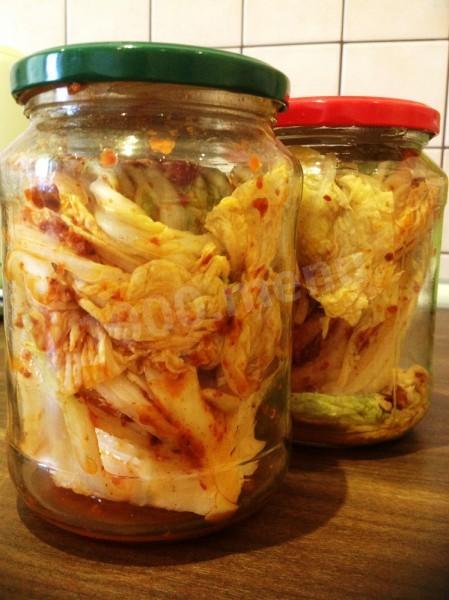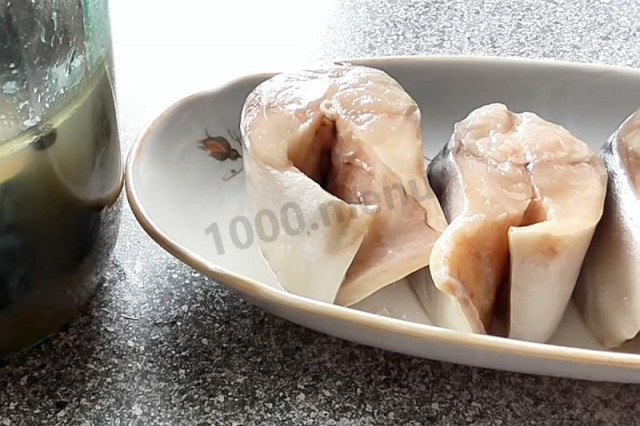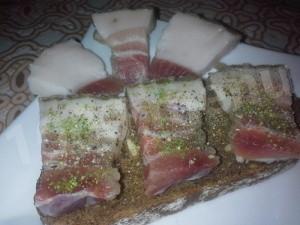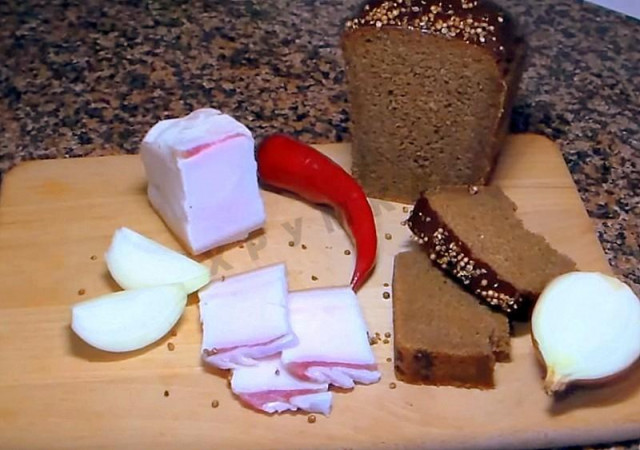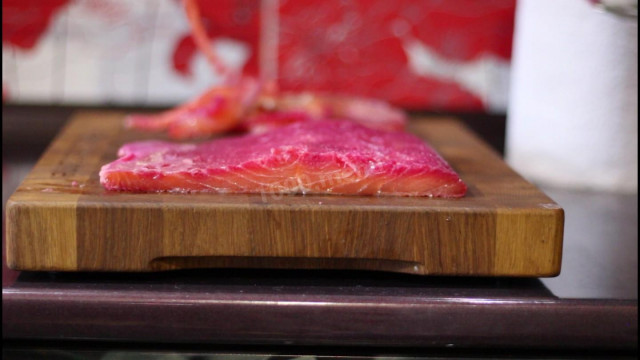Composition / ingredients
Step-by-step cooking
Step 1:
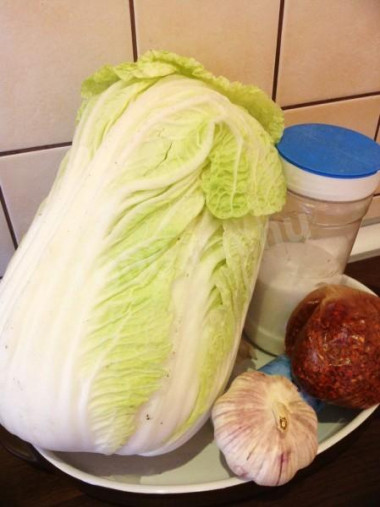
How to prepare Beijing kimchi cabbage in Korean for the winter? First, the head of Peking cabbage is freed from the upper (damaged, withered) leaves. It is better to take large heads, because the crispest and juiciest parts are not leaves, but their base, what we cut from ordinary cabbage.
Step 2:
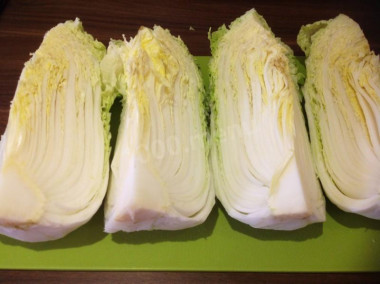
Cut the head lengthwise into 4 parts. We put the cut parts in a large container. I'll notice right away: a mixture of pepper and garlic is a thermonuclear thing and the smell is absorbed into the container once and for all. Therefore, the options are as follows: take a large enameled pan or select a plastic container that you will use specifically for salting kim-chi.
Step 3:
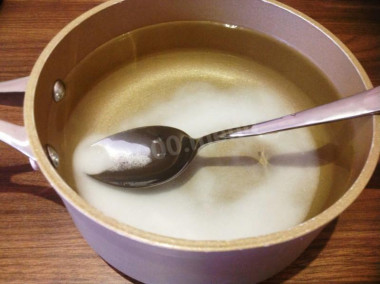
Now we are preparing the brine. I usually pour boiling water over a measured amount of salt, stir it until it completely dissolves.
Step 4:
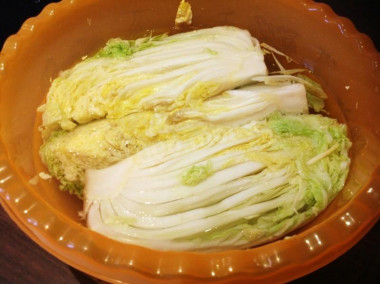
Pour the cabbage with the cooled brine
Step 5:
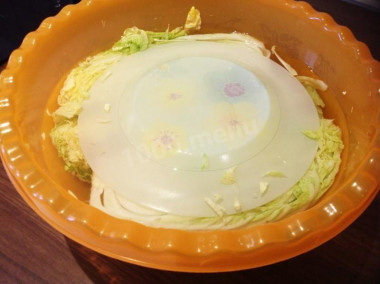
I cover it with a plate so that the cabbage is always in brine. In this form, we leave the cabbage to saline at room temperature for 10-12 hours. I usually pickle in the evening, finish cooking in the morning. After 5 hours, you can turn the cabbage over so that all the leaves are salted evenly.
Step 6:
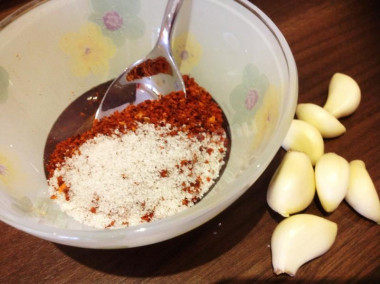
When the cabbage is salted, we prepare the pepper mass. Measure out 4 tablespoons of bitter pepper. I take Korean, ground into large flakes.
Step 7:
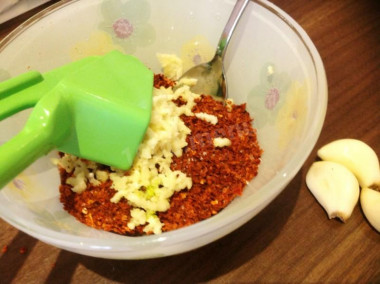
6-7 garlic cloves squeeze out to pepper, pour 1 tsp sugar.
Step 8:
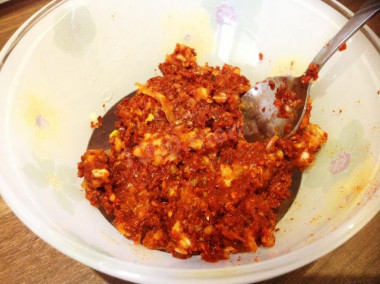
Add a small amount of water (about 2-3 tablespoons) to make a thick gruel.
Step 9:
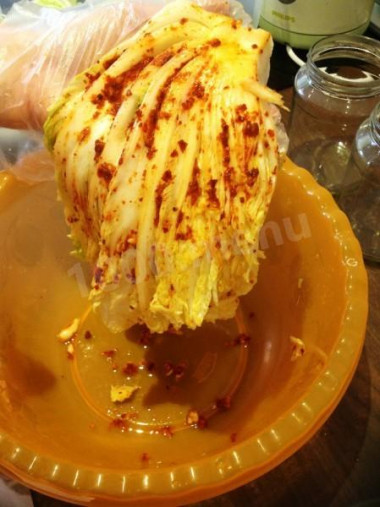
Now WE PUT ON GLOVES (!), take one piece of salted cabbage and smear each leaf with peppermint mush. Then there are 2 options: we put it back in an empty salting container, pour a little brine, put the oppression so that the juice stands out; or we put it tightly in glass jars, pour a little brine, close the lid. In any case, we remove the cabbage to a cool place: the basement, the balcony, the refrigerator. In a couple of days, the cabbage is ready.
It can be stored in this state all winter, the main thing is that it should be in brine, otherwise it will get wet.
How to eat kim-chi? Kim-chi is served as one of the appetizers to any Korean dish (usually there are 3-4 pieces in small bowls). And the easiest way is to get ready-made cabbage, lightly rinse it from pepper (if it is very sharp for you), cut it across into wide ribbons, pour vegetable oil. This is a Russian version:)
It is also very tasty to cook meat with kim-chi. I will not put this in a separate recipe, because the preparation is very simple. Pork should be cut into small pieces, fry it with onions until almost ready, then add the chopped kim-chi and bring to the end. You can add a little water and put it out. The dish turns out very tasty.
Caloric content of the products possible in the composition of the dish
- Garlic - 143 kcal/100g
- Granulated sugar - 398 kcal/100g
- Sugar - 398 kcal/100g
- Chinese cabbage - 16 kcal/100g
- Water - 0 kcal/100g
- Ground hot pepper - 21 kcal/100g
- Table salt - 0 kcal/100g

